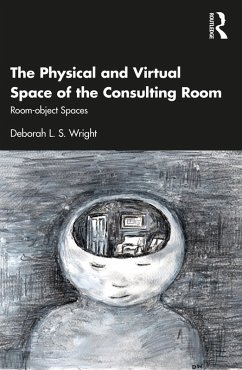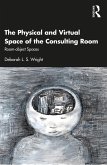Wright explores spatialisation as simultaneously being a psychological projection of meaning and as physically acting upon the environment, utilised to master the undifferentiated, relentless, internal pressure of instinct. Throughout The Physical and Virtual Space of the Consulting Room, she considers the spatial aspects of work with patients by foregrounding the importance of the consulting room and its contents, including the impact of changes of consulting room, travelling, and in working virtually. Illustrated with clinical material and hand-drawn artwork, Wright orients the reader in the new territory by going beyond the existing literature that considers the objects and space of the consulting room solely as transferential aspects of the analyst.
The interdisciplinary approach in this book calls on psychoanalytic theory and technique as well as philosophy, history, archaeology, and anthropology, which will be of great interest to all psychoanalytically orientated therapists as well as anyone, clinical or non-clinical, who makes use of psychoanalysis.
Dieser Download kann aus rechtlichen Gründen nur mit Rechnungsadresse in A, B, BG, CY, CZ, D, DK, EW, E, FIN, F, GR, HR, H, IRL, I, LT, L, LR, M, NL, PL, P, R, S, SLO, SK ausgeliefert werden.
Karl Figlio, Clinical Associate, British Psychoanalytical Society; Professor Emeritus, University of Essex, UK
'Deborah Wright shows us an interesting and somewhat hidden tradition from Freud onwards. The consulting room and indeed all living spaces are given individual meanings by each of us, depending on our individual and cultural experiences. Our Unconscious 'space' offers a necessary dimension in addition to the transference to the person of the therapist who inhabits the space. The author provides clinical evidence, as well as cultural, to show how it can be exposed and used.'
Dr. R.D. Hinshelwood, Psychoanalyst, and Professor Emeritus, University of Essex, UK
'It is a truth universally acknowledged in psychoanalytic/psychodynamic discourse that the consulting room or 'setting', in which clinical work takes place, is of particular importance. Why that should be, beyond what seems 'obvious', however is under-theorised in the literature. Dr Wright rectifies this in her scholarly and accessible book in which she presents clinical observation which advances current theory and practice. She formulates a clear language and terminology to articulate her theory of spatial dynamics, and her own uncanny illustrations add depth to her discourse. The book is a delight to read and essential for teaching and training purposes.'
Meg Errington, Psychoanalytic Psychotherapist; British Psychoanalytic Council, UK
"This book is ground-breaking and contains an abundance of ideas to seed thinking. What Wright so generously offers here, others will no doubt build upon in their own imaginations, theorizing and clinical practices. It earns a place on our bookshelves." - Catriona Wrottesley, Society of Analytical Psychology and Tavistock Relationships









